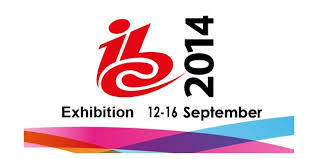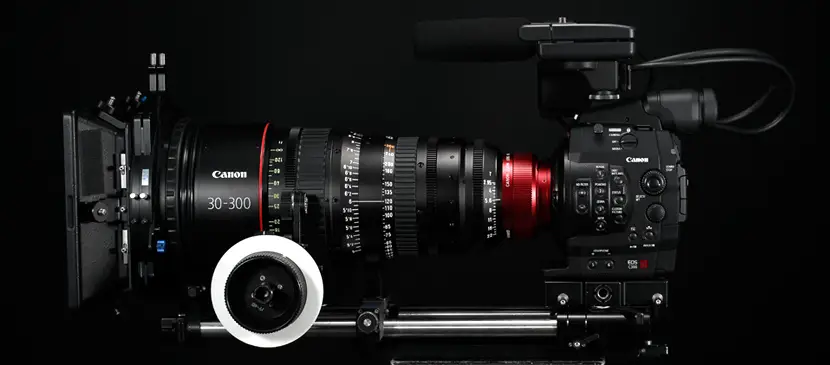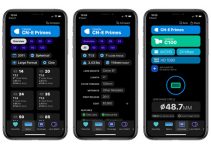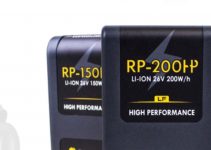You might have heard that recently, earlier this week matter of fact, B&H dropped their price on the broadcast and low-budget filmmakers’ “work-horse” – the Canon EOS C300 EF Mount by $2K. Thus, making the C300 “cheap” in comparison to the original MRSP when it was announced nearly three years ago.
Now retailing at B&H for $12,000 after the price drop, the C300 is, as Englishmen would say “cheap as chips” for what it does. And not only that, the C300 has earned the respect of ad agencies, producers, most DP’s with common sense and the broadcast world in general. The C300 can be spotted on the sets of most commercials, low-budget short and feature films, corporate promos, and documentary projects aimed at broadcast exhibition.
Here in the land of “fish & chips” called Britain, every major broadcaster including the mighty BBC, consider the Canon C300 the first, if not the only, choice for HD acquisition in most cases where a combination of cinematic image, portability, and cost/performance ratio is considered paramount.
At the moment, this price drop seems to be affecting only the US ($$$) market, and has not trickled down to Europe (no kidding) at least not yet. Canon UK or US for that matter, have not released any official information on the price drop, which has lead many to believe, this may be retailer specific.

Speculations on the web ran wild, as to the reason behind the price drop, with most thinking that a C300 replacement was imminent with the approaching IBC Show in September in Amsterdam, which is kind of like the “European NAB”.
Whether Canon unveils a successor to the highly successful C300 at IBC or later in 2014, is yet to be seen, but one thing is certain – the impact that this camera has had on the filmmaking and broadcast community is massive.
Although it was met with some skepticism upon its announcement in November 2011 mostly due to the $20,000 original price tag, the C300 prove to be a winner for Canon. I still remember that night in November 2011, when it was RED vs. Canon.
The event was so hyped up by the “Historic Hollywood Announcement” banner under which Canon announced their 8bit 4:2:2 broadcast/cinema camera that we now know as the EOS C300, that when RED announced their much awaiting 4K Scarlet for less than $10,000 on the same night, most of us, me included were a bit underwhelmed by the C300’s spec and flabbergasted by the price tag.
But Canon knew what they were doing, or at least it seemed so. Had it not been for the success of the 5D Mark II in the video world, we’d probably wouldn’t have seen a C300, but that’s a different story. The C300 was the natural evolution from the video DSLRs.
It took some time for the C300 to prove itself in the field, but slowly it became the most trusted and wanted camera on low-budget productions. And we can see why it was and still is so desired by the powers that be in the broadcast world especially – the C300 records in a 50mbps 422 broadcast codec on board in an MXF wrapper on cheap CF media cards.

Combined with a Super 35mm sized (4K Sensor), excellent low-light performance, somewhat DSLR-like handling, professional connectors such as XLR inputs and HD-SDI out, and EF/PL mount capability, the C300 was and still is a no-brainer. No transcode needed, just ingest and edit away.
But, there’s another thing that sets the C300 apart from similar cameras. The C300 does some pretty interesting tech “voodoo” to produce those incredibly cinematic images from its Super 35mm sensor. And the sensor is the key – it is a 4K sensor – the C100 and the C500 have the same sensor. The C500 is of course 4K capable via an external recorder, however, the C300 uses the same sensor and s similar sensor readout.
The C500 being Canon’s Cinema EOS flagship does employ a DCI compliant sensor area (4K at 4096×2160 effective pixel area) whereas the C300 has 3840×2460 active pixels, but that’s nitpicking. Here’s a diagram of the C300 sensor pattern readout:

Let me say this first – the C300 does NOT do 4K and will never do (most probably). However, it does feature a unique capture method, which involves a direct read out of four video components – Red, Blue and 2 x Greens (Gr and Gb) with each at 1920×1080. Thus ensuring maximum picture quality and minimised artefacts. So for those of you wishing that Magic Lantern or someone else can “unlock” the 4K recording on the C300, that is probably not possible, and is something that is in the realm of fantasy.
So for those of you there, still doubting the imagery from the Canon C300, here’s a few clips and trailers from some award-winning feature films shot on the Canon EOS C300.
First – the trailer for the 2013 Palm D’Or winner – “Blue is the Warmest Colour” (Life of Adele in some countries):
Here’s also another stunning feature film shot on the C300 – “Blue Ruin” (2013) Dir. Jeremy Saulnier. Winner of the Cannes Film Festival 2013 FIPRESCI Prize:
I highly recommend you check out these two films, not only for the fact that they were shot on the C300, but for the fact that they are incredibly good films. The fact that they were shot on the C300 did not make them better films, but it did give the filmmakers, which in both cases worked with very limited budgets, to achieve highly cinematic image quality. I saw both of these in the cinema and would have never been able to say – yeah, those were shot on so and so camera. I thought they were both shot on the Alexa at first as they were so filmic. Then, I found out they were both shot on the C300 and was blown away.
The producers, directors and cinematographers decided that the C300 was the right tool for the job. Pure and simple. And the results speak for themselves. So, if you’re told by a producer, or someone else who “claims” that you have to shoot on an Alexa, or an Epic, or an F65 or on another high-end camera in order to have a “proper” looking film – have them take a look at these two films.
[Via – B&H]
Disclaimer: As an Amazon Associate partner and participant in B&H and Adorama Affiliate programmes, we earn a small comission from each purchase made through the affiliate links listed above at no additional cost to you.
Claim your copy of DAVINCI RESOLVE - SIMPLIFIED COURSE with 50% off! Get Instant Access!





